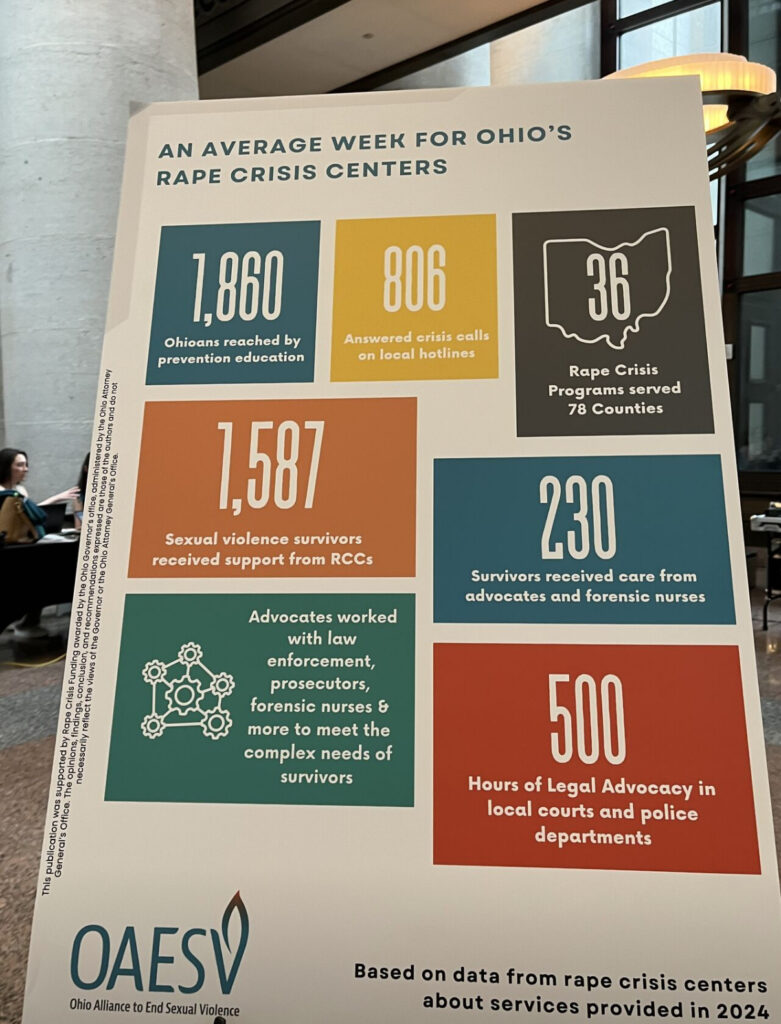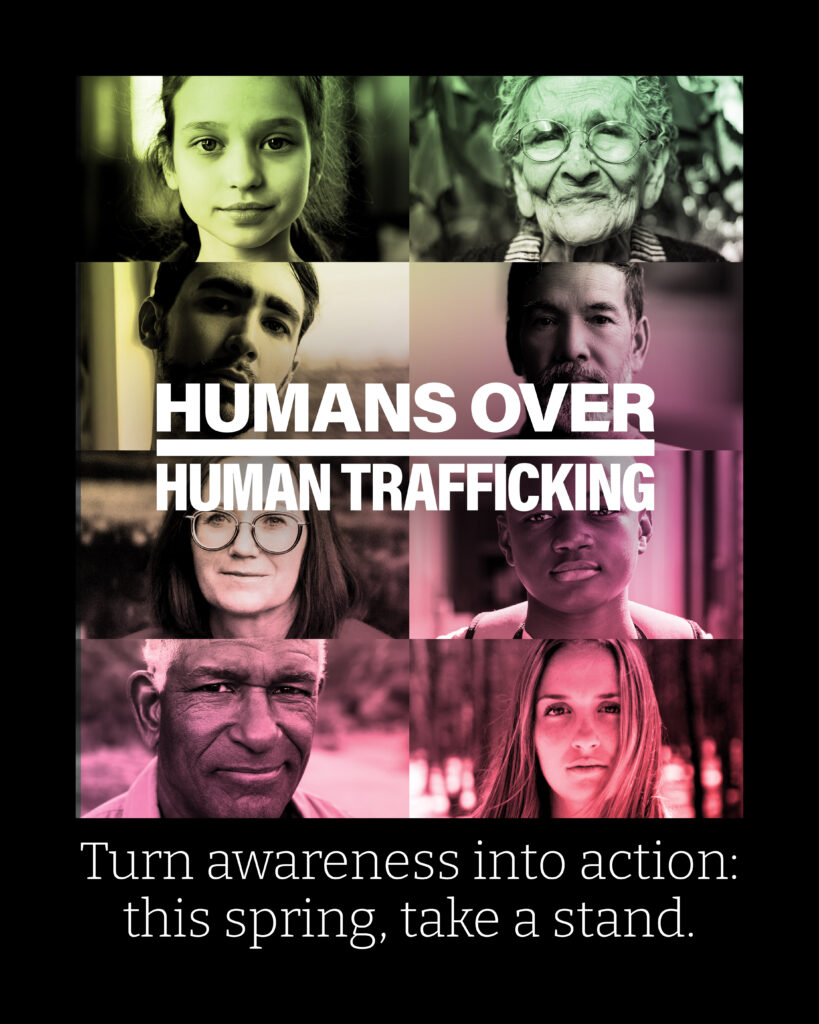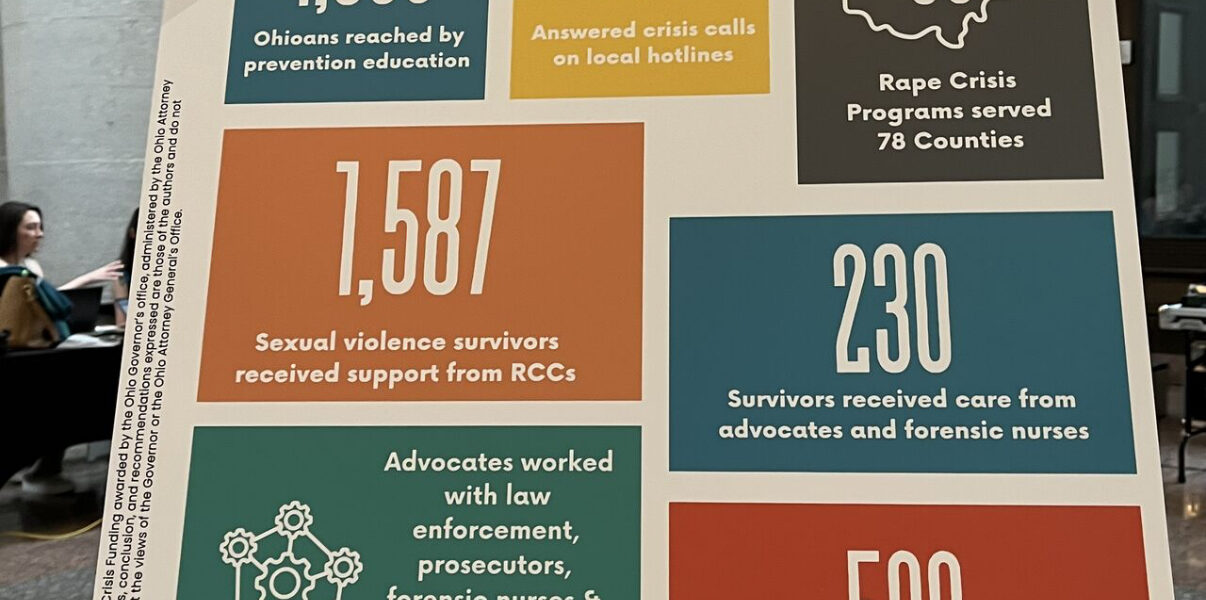April is Sexual Assault Awareness Month and Child Abuse Prevention Month—two deeply connected issues that lie at the heart of our work to end human trafficking.
Human trafficking doesn’t happen in a vacuum. It thrives on unaddressed trauma, system failure, and societal silence. Research and lived experience confirm what survivors have long said: childhood sexual abuse and early trauma are among the strongest predictors of future exploitation. To end trafficking, we must address its roots.
5 Facts You Should Know: Sexual Violence & Human Trafficking
- 84% of trafficking survivors experienced sexual abuse during childhood. Childhood sexual abuse is one of the strongest predictors of future exploitation.
- Most survivors of sex trafficking are also survivors of childhood sexual abuse. Early trauma is often the entry point to vulnerability.
- Youth who experience sexual abuse are 28x more likely to be arrested for trafficking-related charges. This is a systems failure, not a personal one.
- Sexual violence is commonly used as a method of control by traffickers. Abuse is both a pathway into and a tactic within trafficking.
- A history of sexual violence is the most common trait among trafficked girls. Prevention must start with recognizing and responding to sexual abuse.
Let’s stop trafficking where it begins—by identifying and addressing early abuse.
“Sexual abuse and human trafficking are not isolated issues. The correlation is disturbing and alarming—but not surprising.”
— Polaris Project
Why Prevention Must Be Holistic
We cannot address trafficking in isolation. Preventing exploitation requires a coordinated response to sexual violence, childhood trauma, and system gaps.
This is why Greater Cleveland’s Coordinated Response to Human Trafficking, in collaboration with Cleveland State University, is leading efforts to implement a validated, systemwide screening tool to help professionals identify trafficking risk early. This tool will be used across sectors—including child welfare, healthcare, and juvenile justice—to ensure that early warning signs are recognized and addressed.
“Screening is essential if we want to move from reactive crisis response to proactive prevention. A systemwide tool gives professionals across sectors a shared definition and language—and the ability to intervene earlier and more effectively.”
— Dr. Rachel Lovell, Lead Researcher, Cleveland State University
Alongside this systems-level work, we highlight the efforts of our partners this month:
Cleveland Rape Crisis Center raised awareness all month long about the prevention of sexual violence. Our community participated in events and awareness activities to support survivors and strengthen services across Northeast Ohio. Together, we can create a culture of respect, where survivors are supported, and every person is treated with dignity and care. To learn more about survivor services, click here.

Hundreds of people gathered at the Ohio Statehouse during the month for the 13th Annual Ohio Alliance to End Sexual Violence Advocacy Day.
Canopy Child Advocacy Center raised awareness about the prevention of child abuse. During the month, Kirsti and Jennifer Johnson, President & CEO of Canopy had a conversation about how working together to prevent child abuse is one way we can stop human trafficking before it starts. Traffickers often target children who are hurt or vulnerable, which is why early support and intervention are so important.
You can watch the first installment in the four video series here. The full series will be shared on our social media channels in the coming days.
Engaging Men & Boys in the Work of Prevention
Addressing the root causes of human trafficking also requires shifting harmful norms about power, masculinity, and control—and inviting men and boys to be part of the solution.
Prevention isn’t just about protecting girls. It’s also about raising boys who value consent, challenge violence, and believe in dignity for all.
Programs across the country are proving that when men and boys are engaged with intention, honesty, and accountability, they become powerful allies in stopping exploitation before it starts—as fathers, coaches, teachers, mentors, and peers.
Ending exploitation means building a culture where respect is taught early, and everyone sees themselves as part of the solution.
We welcome partnerships with schools, youth organizations, and community groups that want to bring prevention programming for men and boys into their work.
Contact our Director of Education & Training, Carolyn Arny at carny@collabtoendht.org to learn more.
How You Can Help

Please donate – When you support the Collaborative, you can help fund prevention education so human trafficking doesn’t happens in the first place in Cuyahoga County. You can help extend opportunities to survivors, and you can help to create the kind of world we all want—and deserve—to live in. Thank you for considering a donation.
Keep the conversation going – Share this newsletter with a colleague, friend, or community partner who can join you in being part of the solution.
RSVP for our next training – Fundamentals of Human Trafficking (Free, virtual) Thursday, May 15 | 5:30 PM–7 PM | 🖥️ Zoom – Earn 1.5 CEUs – Led by Carolyn Arny, Director of Education & Training and member of our Survivor Advisory Council, this 90-minute session is perfect for individuals, teams, classrooms, HR departments, or anyone seeking to make a difference.
Together, We Can Prevent What’s Preventable
When we address sexual violence, childhood abuse, and harmful cultural norms, we don’t just support healing—we stop exploitation before it starts.
Thank you for standing with us as we work to build a future where every child is protected, every survivor is supported, and trafficking has no place in our communities.
Last modified: April 29, 2025


